
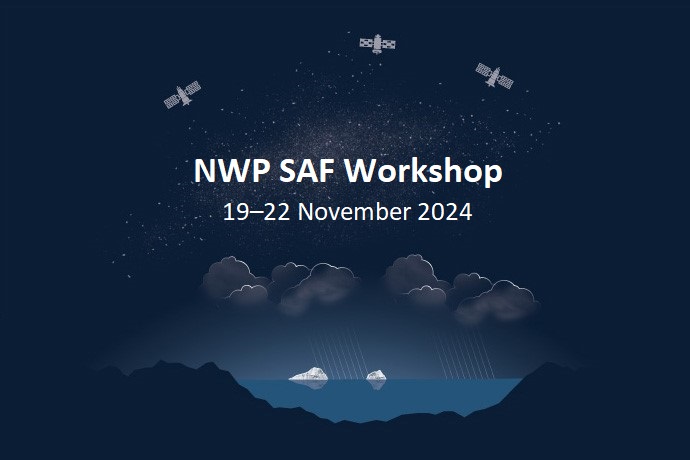
From 19 to 22 November 2024, ECMWF hosted the NWP SAF Workshop on Satellite Observations of the Earth System Interfaces. The workshop continued the successful series of highly focused meetings organised at ECMWF on behalf of EUMETSAT’s NWP SAF and aimed to advance the exploitation of satellite data in NWP.
Interface observations refer to observations that are sensitive to multiple Earth system components, including the atmosphere, land, sea ice, snow, and the ocean. They are key for NWP and for the reanalysis of past weather and climate.
In a coupled data assimilation framework, used in Earth system approaches, satellite-sensed interface observations have the unique potential to simultaneously constrain various Earth system components, providing consistent initial and boundary conditions to Earth system prediction models.
As NWP is extending towards a wider Earth system approach, such observations play an ever increasing role.
More than 50 experts from across the world participated in the workshop. In addition to 23 presentations, there was plenty of opportunity for discussion during a poster viewing session and in three working groups.
“The workshop was a great opportunity to discuss future directions to enhance the exploitation of interface observations for coupled Earth system NWP and reanalyses,” said ECMWF scientist Patricia de Rosnay.
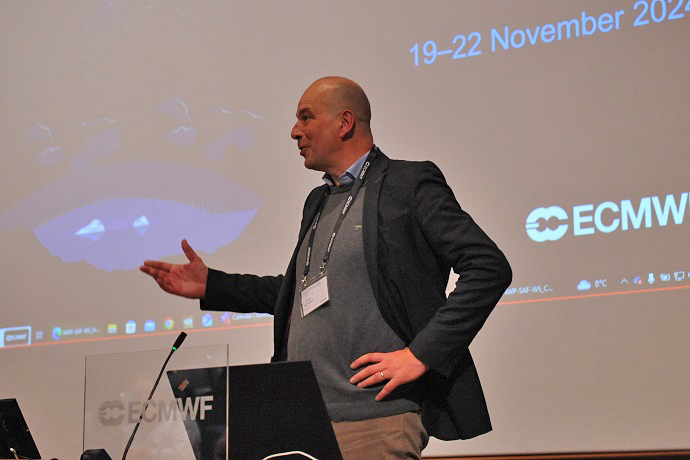
Lothar Schüller (EUMETSAT) welcomed the participants and stressed the importance of NWP SAF activities for the successful exploitation of EUMETSAT's satellite data. ECMWF’s Andy Brown and Tony McNally also made some introductory remarks.
Space agency perspectives
Filomena Catapano introduced ESA’s perspective on interface observations. She presented the DANTEX project, which aims to develop level 1 data assimilation of surface-sensitive radiances in ECMWF’s coupled data assimilation framework.
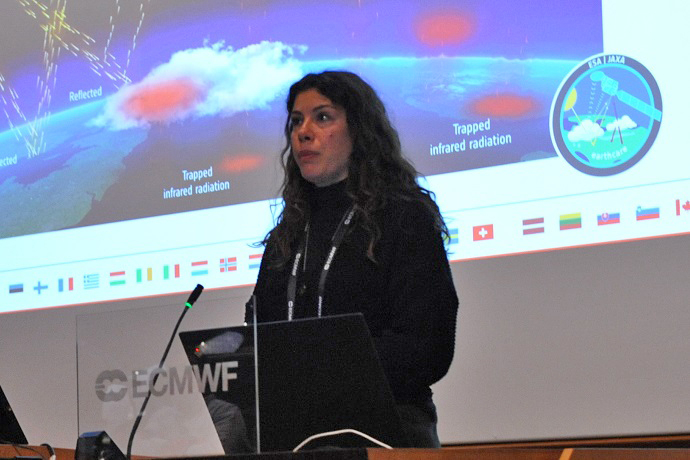
Filomena Catapano presented the DANTEX project and introduced ESA’s wide range of interface observations.
Anne O'Carroll added the EUMETSAT perspective, highlighting the relevant expertise available across EUMETSAT’s SAF network, as well as efforts for cross-validation of products from different sensors and in situ measurements, particularly for sea-surface temperature.
Data assimilation
Phil Browne and Sebastien Massart (both ECMWF) presented different approaches to coupled data assimilation, using extended control vector approaches with relevant applications and promising results for ocean skin temperature and sea-ice concentration. They highlighted the need for in situ observations for independent evaluation and future anchoring in data assimilation.
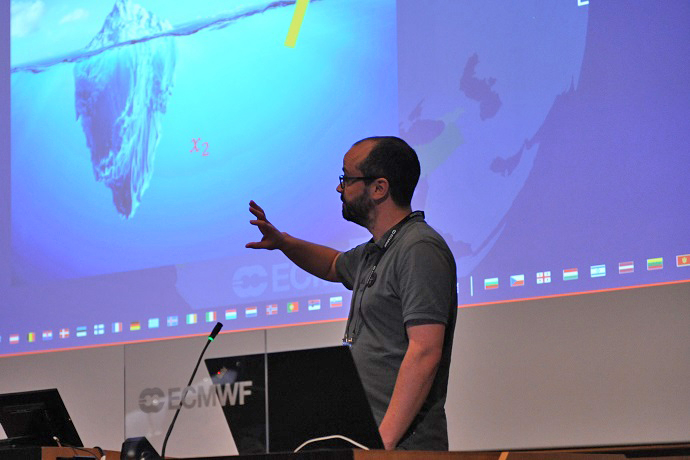
Phil Browne talked about ocean skin temperature and sea-ice concentration.
Tracy Scanlon and Alan Geer (both ECMWF) presented results from using these concepts to exploit passive microwave observations for ocean surface temperatures and sea-ice concentrations. Both highlighted benefits not only for the ocean or sea-ice analysis, but also for the atmosphere.
The impact of satellite ocean-surface observation data assimilation was presented by Hao Zuo (ECMWF), who also described plans for coupled sea-ice data assimilation in the context of DANTEX, in preparation of the CRISTAL Copernicus Expansion mission.
Cristina Charlton-Perez (UK Met Office) gave a presentation on coupled land–atmosphere data assimilation developments in the JEDI framework. She showed the importance of snow and soil moisture data assimilation in the current regional and global operational systems at the Met Office.
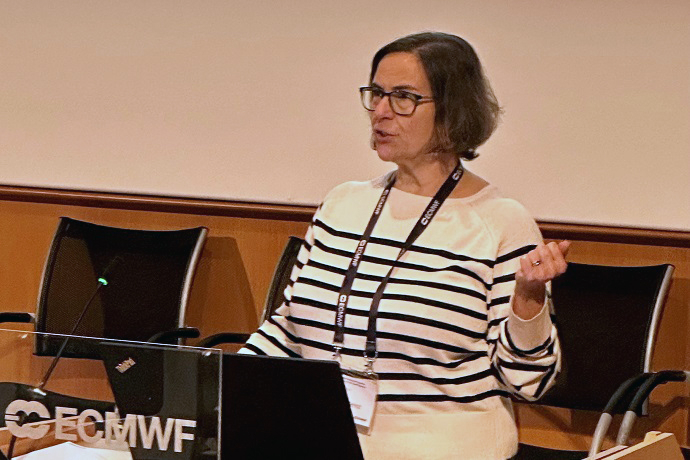
Cristina Charlton-Perez talked about coupled land–atmosphere data assimilation developments.
Similarly, efforts towards coupled assimilation at Météo-France were summarised by Nadia Fourrié. She showcased how infrared satellite data can be used to improve the representation of land surface temperature, and she examined how short-range forecast errors for the atmosphere and the ocean are interconnected.
Sea ice and snow
Several presentations explored how surface-sensitive passive microwave radiances can be modelled over sea-ice or snow conditions and exploited in an Earth system context.
A wide range of different approaches was presented, including purely physical or machine-learning models, as well as hybrid approaches. The wide range of options reflects the difficulties in forward modelling under a wide range of conditions, and promising progress is clearly being made.
The topic was also highlighted in the working groups as a key development area. Further progress can be made with the use of satellite interface observations, for which community collaboration will be highly beneficial. Melody Sandells (Northumbria University, UK) presented one such activity, formed under the International Space Science Institute (ISSI) in Bern.
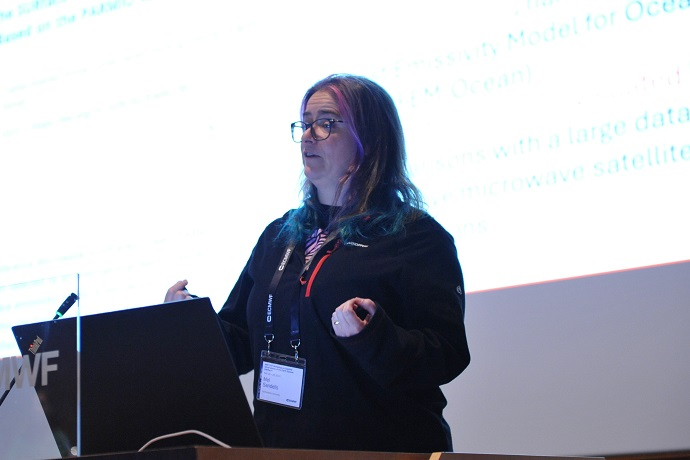
Melody Sandells introduced a new community initiative on improved modelling of snow and sea-ice emissions.
Wind, land and ocean
Sébastien Garrigues’ (ECMWF) presentation highlighted the relevance of machine-learning observation operators to assimilate microwave and Solar Induced Fluorescence (SIF) satellite observations over land surfaces, with some impact on Leaf Area Index.
Ad Stoffelen (KNMI) showed how high-quality scatterometer wind vector retrievals from various satellites consistently highlighted both model wind speed and direction biases over the ocean. He suggested that scatterometer information was not being used to its full potential as a result of these model biases.
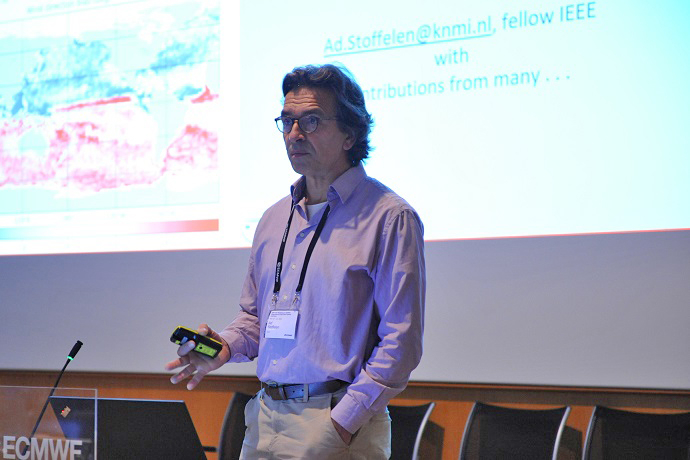
Ad Stoffelen suggested scatterometer information was currently being under-used.
It was also shown that ASCAT wind speed information was still good quality above 35 m/s, and it was noted that EPS-SG SCA will provide more accurate information at high wind speeds.
Giovanna De Chiara (ECMWF) showed how the inclusion of ocean currents improves scatterometer departure statistics, and how the assimilation of scatterometer measurements can influence ocean parameters.
More generally, the possibility of assimilating scatterometer observations within an all-sky, all-surface framework was discussed, potentially enabling passive and active instruments to be treated in a consistent way.
Catherine Prigent (CNRS, France) and Stuart Newman (UK Met Office) reviewed the latest developments in emissivity modelling for passive microwave and infrared radiances, highlighting recent community efforts to develop physical reference forward models.
These have been used for detailed investigations of leading uncertainties, and to derive fast models, for instance through machine-learning approaches. Development of these forward models underpins Earth system exploitation of interface observations in coupled data assimilation.
Forecasting directly from observations
Taking a very different approach, Eulalie Boucher (ECMWF) showed the latest results from ECMWF’s efforts to produce forecasts directly from observations, without an explicit data assimilation or physical modelling step. She highlighted that such a system can use interface observations that are often challenging for physical systems and make skilful forecasts, including for interface variables such as waves or sea ice.
The availability of in situ observations is important in such a system to be able to connect satellite data to more directly observed quantities.
Working groups
At the end of the workshop, three working groups met on ‘Observation opportunities’, ‘Forward operators’ and ‘Data assimilation/coupled data assimilation’.
An over-arching theme of the working group outcomes was that a successful exploitation of Earth System interface observations requires more than ever the expertise across different domains, often spread over different communities. This applies particularly for the forward modelling of the observations, but also for other aspects, including diagnostics and evaluation of model developments.
EUMETSAT’s SAF network can play an important role in this respect to facilitate the required interaction and development of tools, as NWP extends to wider Earth system applications.
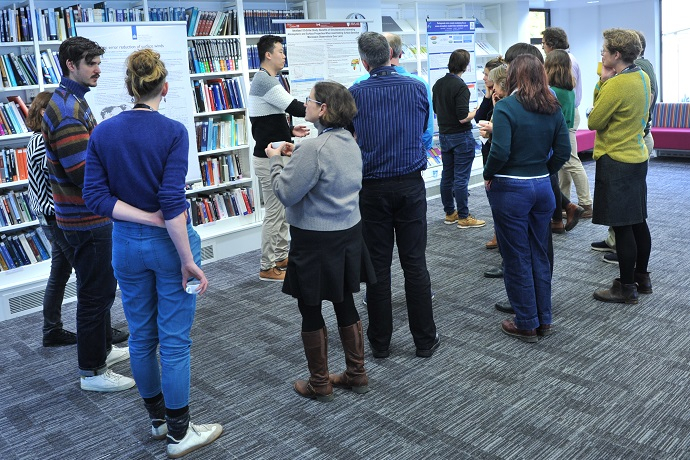
A poster viewing session gave rise to plenty of discussions.
“When it comes to Earth system analysis and forecasts, it has become increasingly clear that it is essential to work in synergy with the domain experts and the data providers,” said ECMWF scientist Angela Benedetti.
“As we increase the complexity of the modelling, physical understanding is still paramount, but machine learning can help in supporting faster exploration of the observations.”
Resources
A full record of all presentation slides is included on the workshop page.
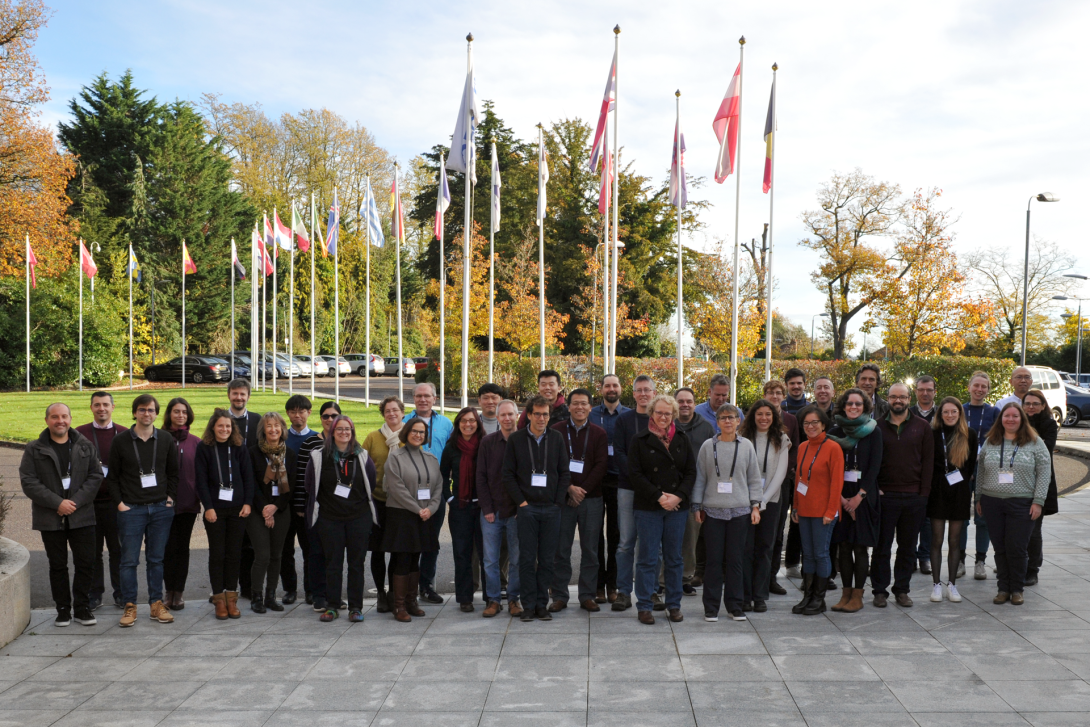
The workshop participants at ECMWF.
